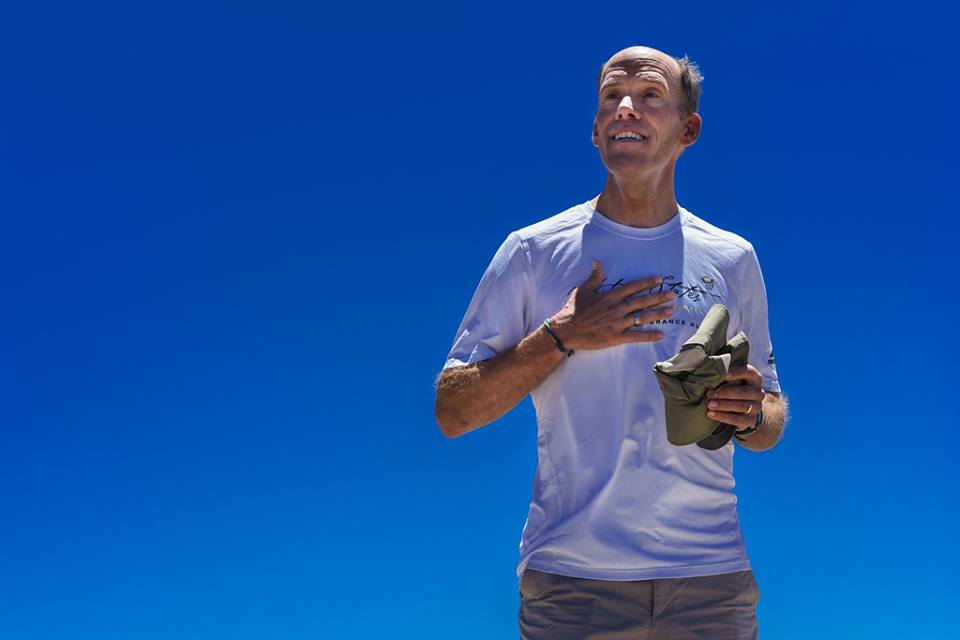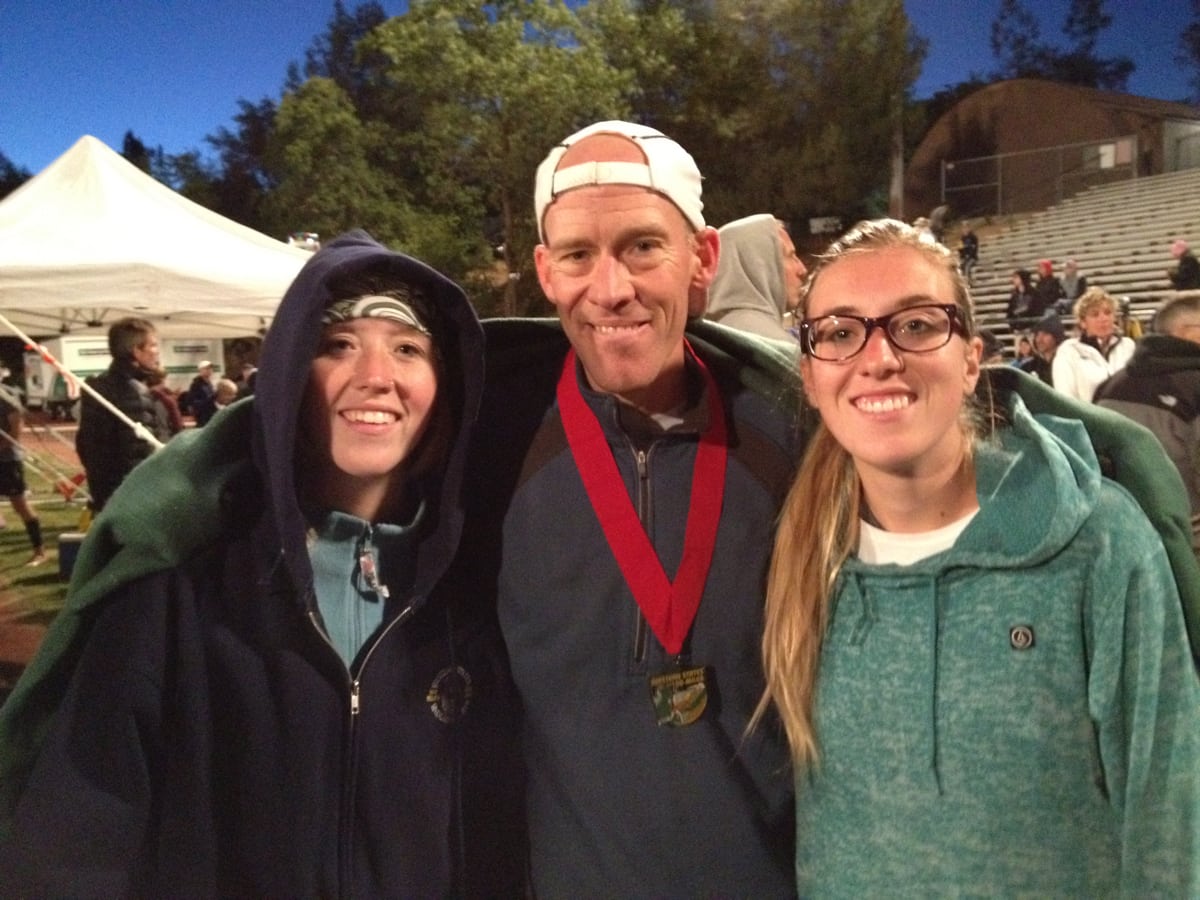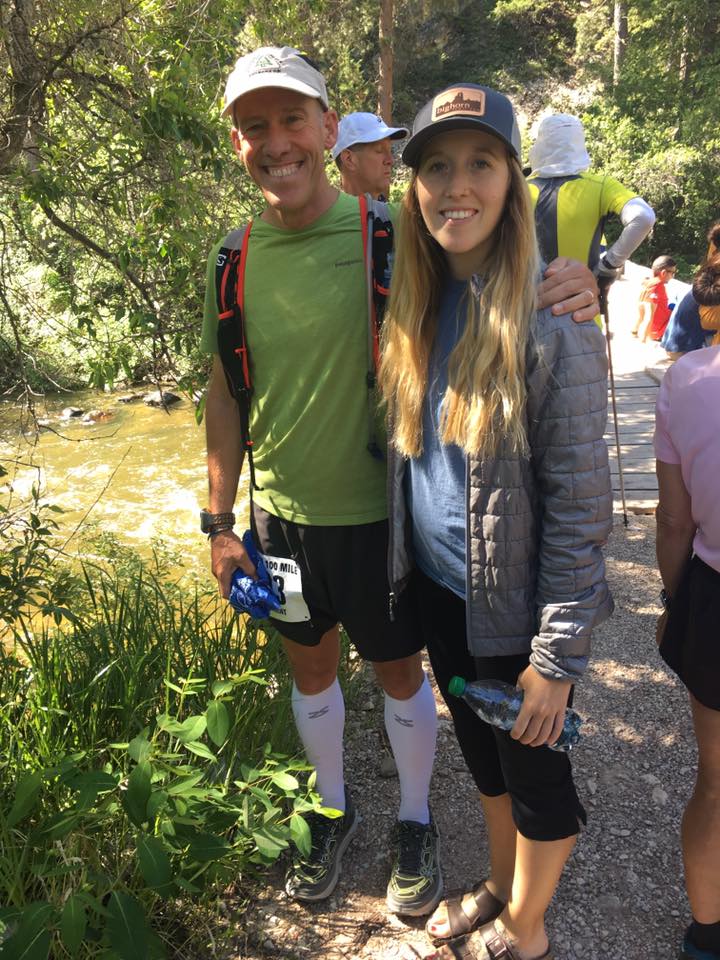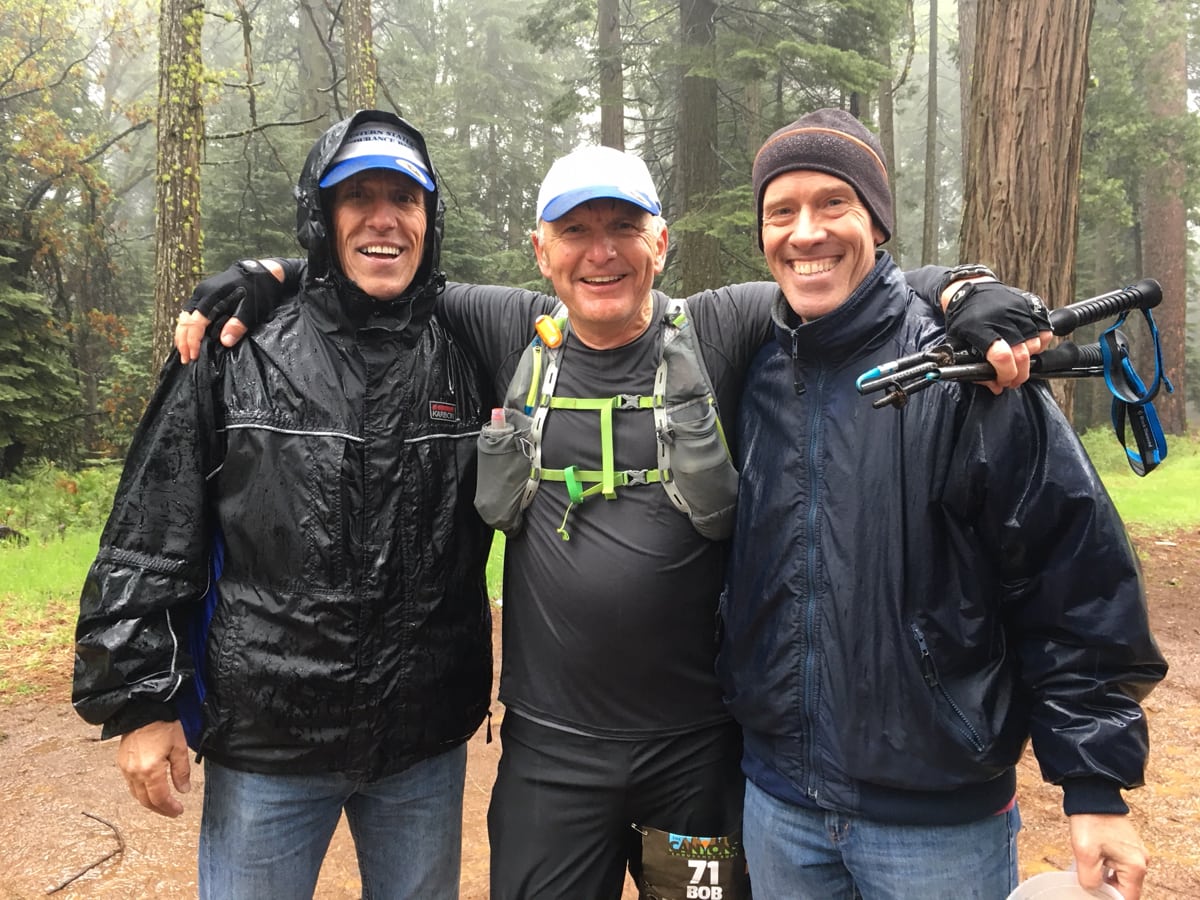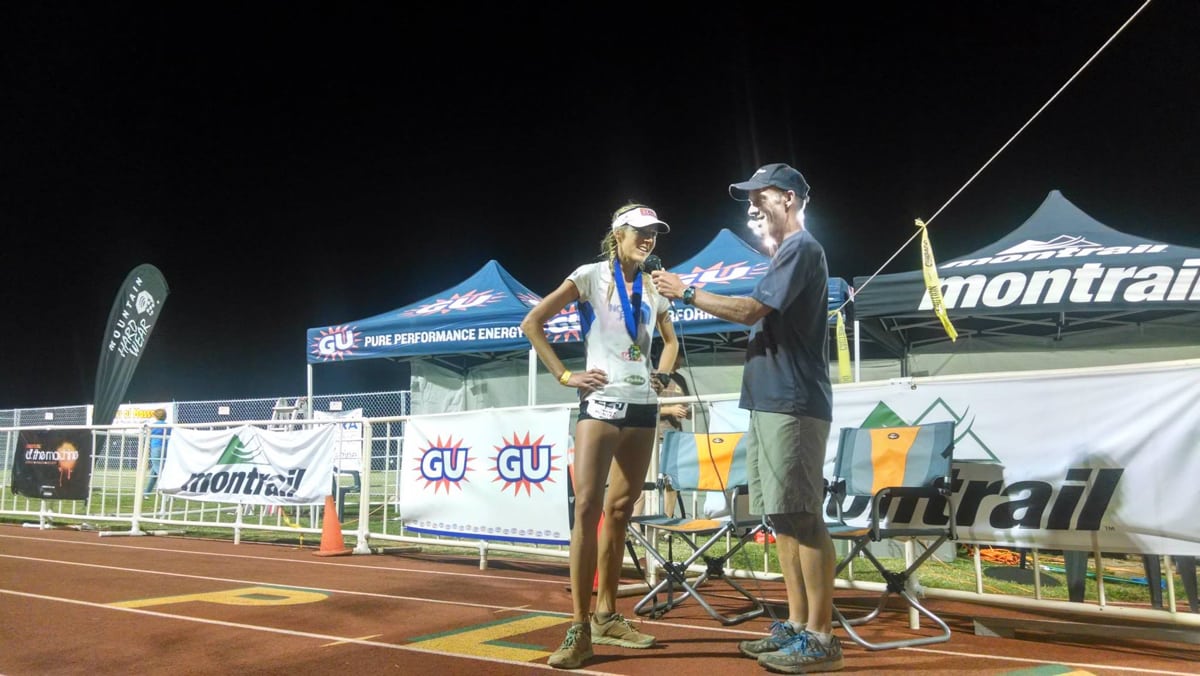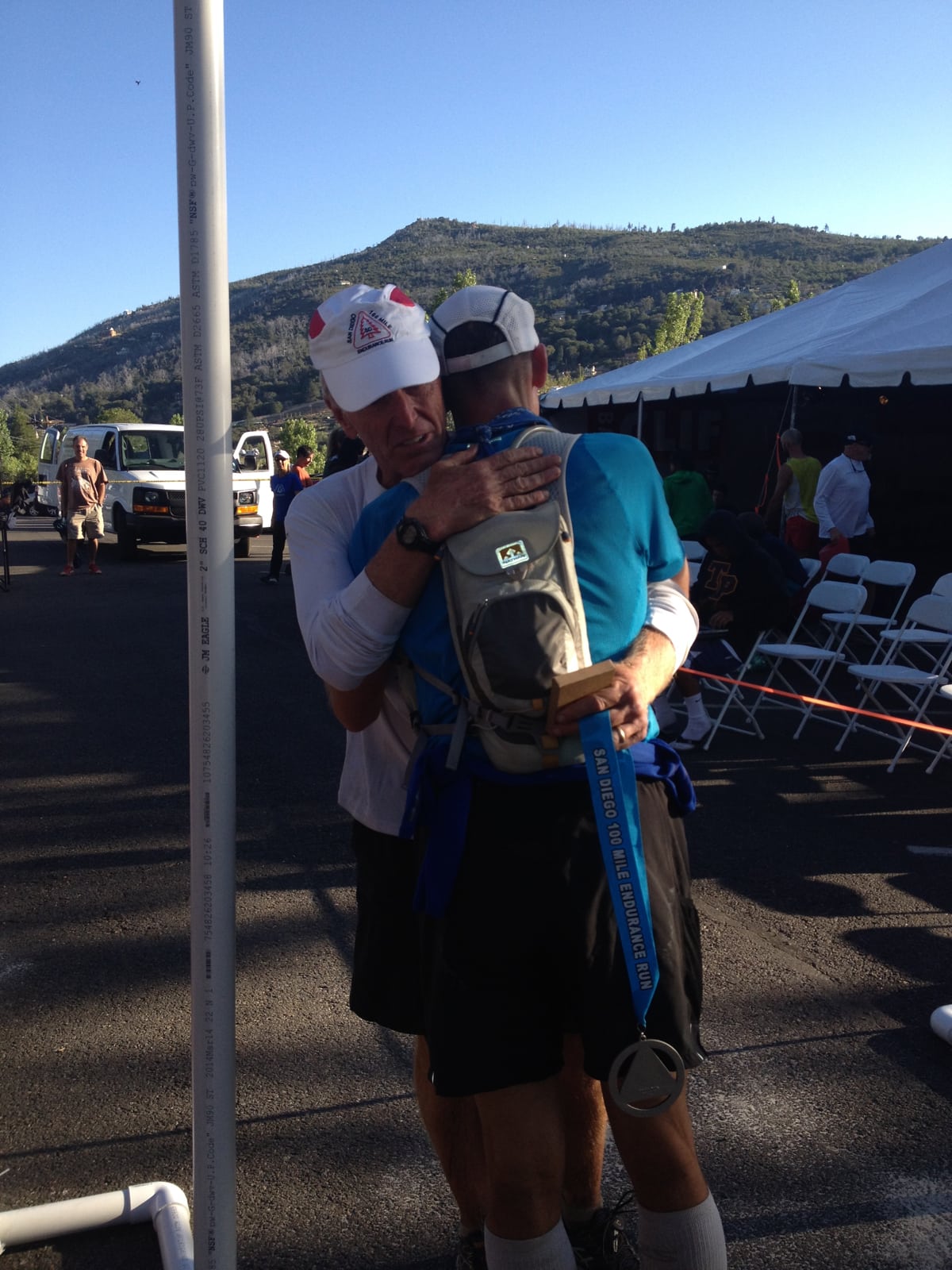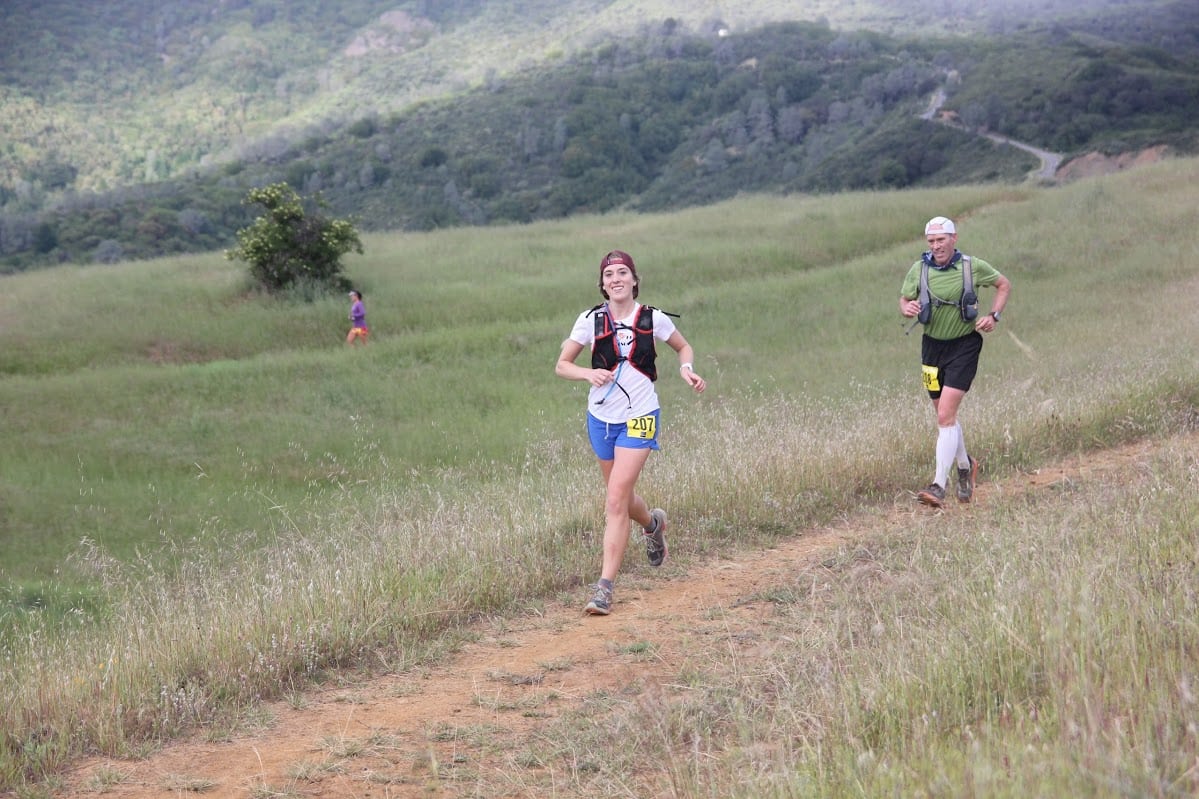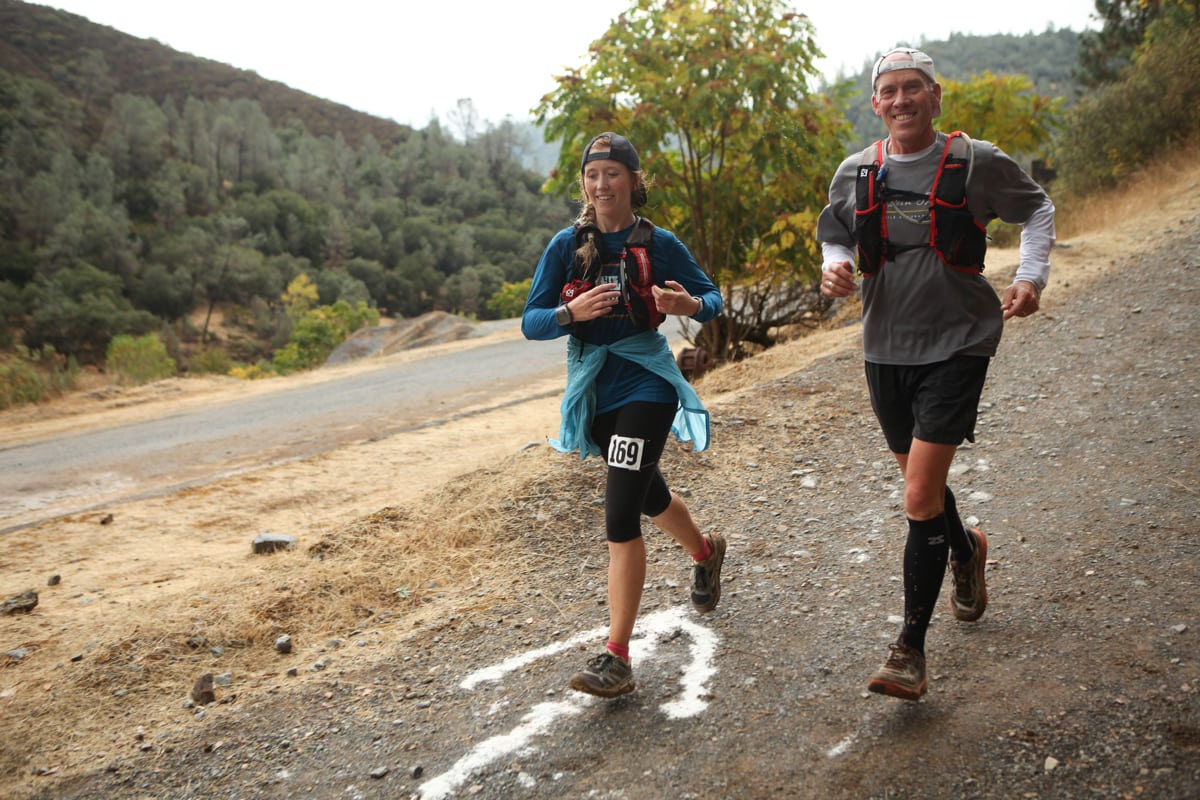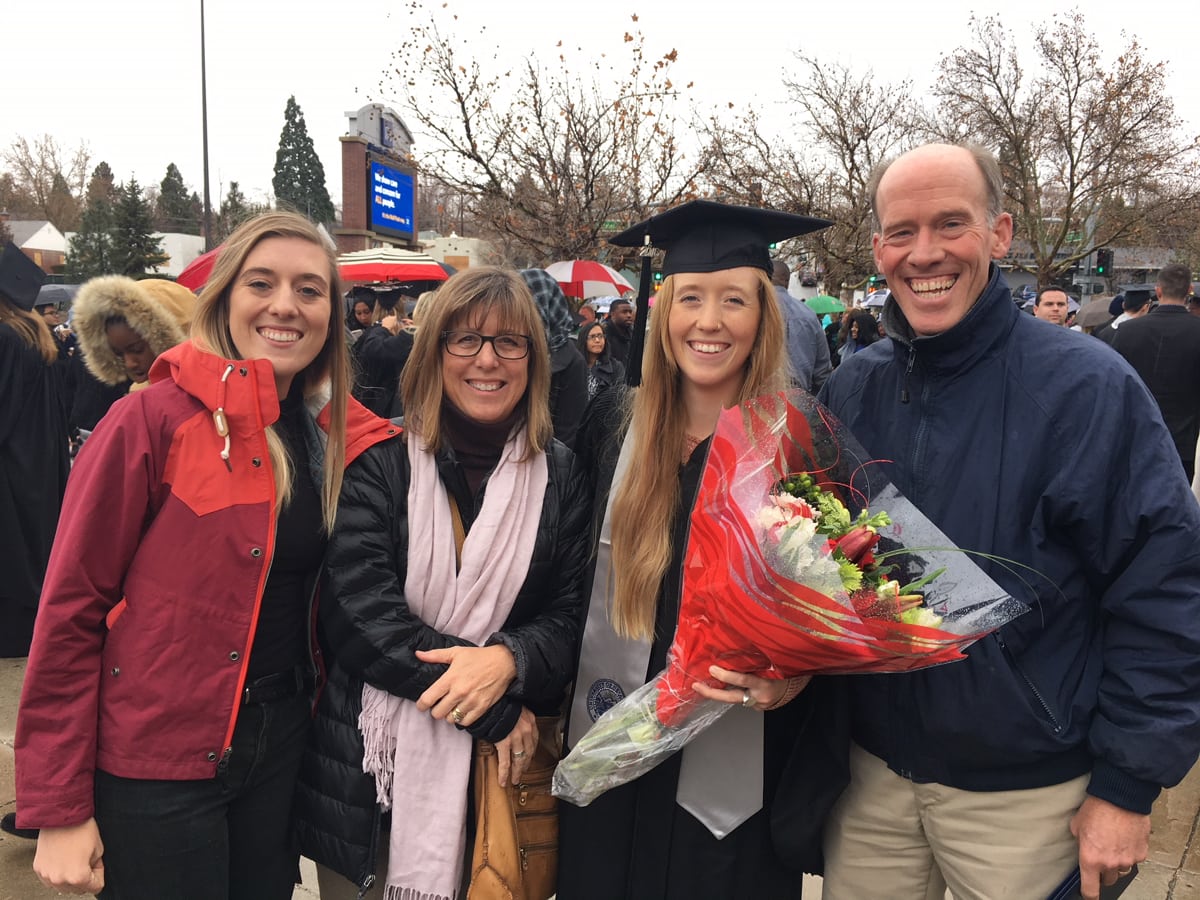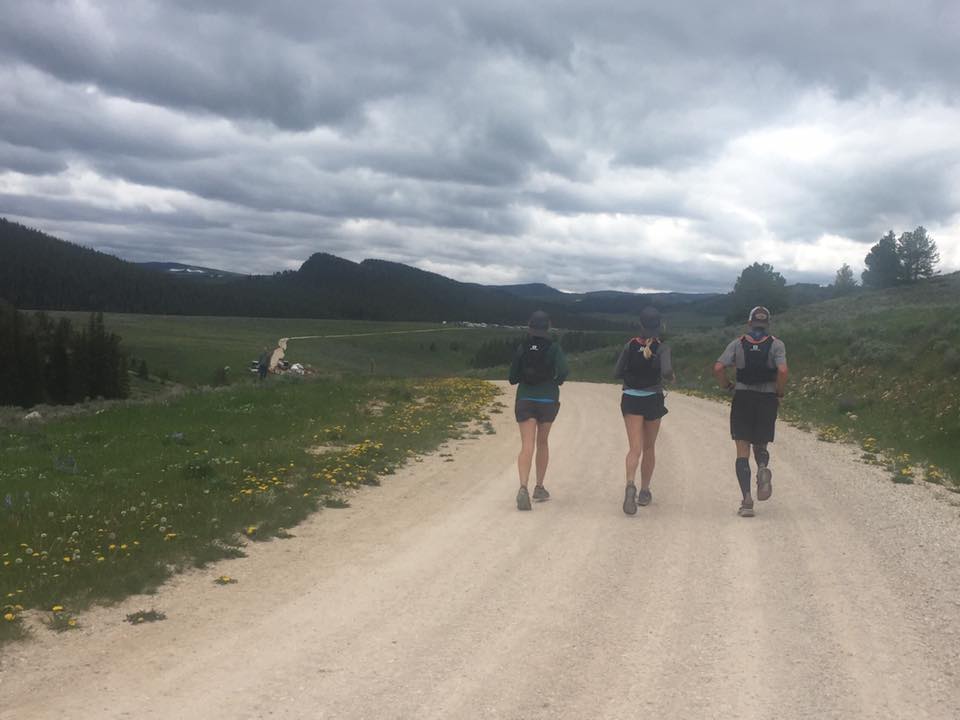The mind of an ultrarunner may not be considered ‘normal’ by mainstream standards. The minds of ultrarunners generally contain incredible fortitude, fierce independence, and an ability to navigate complex problems and obstacles. Watching the ultrarunner mind at work is beautiful, observing as it reacts to hundreds of miles of canyons and mountains, as well as relentless hours of hard and sometimes painful work.
Yet, when trying to talk to this type of mind about its triumphs and tribulations, it is as journalist and ultrarunner John Trent, who has been documenting the takes of ultrarunners for nearly 25 years, describes, akin to “pulling a miner out into the sunlight for the first time.”
From ultrarunner to ultrarunner, John brings out organic and authentic emotions while talking with legends like Scott Jurek, Kaci Lickteig, Stephanie Howe Violett, Magda Boulet, and Rob Krar. There’s laughter, memory loss at those most painful moments, and some tears, as writer and subject–runner to runner in John’s case as he’s been at this ultrarunning thing for longer than many of the people he interviews–corroborate and commemorate about the proverbial runner’s journey.
“When you’re interviewing somebody and it works… you connect with them and they share something that they wouldn’t have otherwise, it is really special,” John told me.
There were no tears when I spent an hour with him, talking about his life and love of running, but there were laughs, and many stories.
John Trent is a writer and runner, a father and husband, and a good friend to many runners and non-runners. He is a former President of the Western States 100 Board of Trustees, a current member of that same board, and a historian at heart. Now, at age 54, after spending his entire adult life writing about and for others, I am turning the pen on him. I hope to do John and his story justice.
John and his wife Jill Trent have two daughters, Annie, 28, and Katie, 25. A family of ultrarunners now, yet it was way back in 1995 when John first learned about the sport of ultrarunning. He had been a runner through middle and high school, growing up in Reno, Nevada. He spent a difficult two weeks on the University of Nevada, Reno cross-country team, before deciding the rigid workouts were not for him. Instead, he continued to run on his own and after graduation, dabbled in longer regional races. In 1995, writing for a newspaper assignment, John profiled a local runner, then-51-year-old Joe Braninburg, who was racing Western States that year. He interviewed Joe while running the last 38 miles with him, the year the legendary Tarahumara runners of Mexico’s Copper Canyons chased Tim Twietmeyer and Ann Trason.
“At the time, I couldn’t imagine how a 51 year old could run Western States,” John admitted. “I ran the last 38 miles with him and it changed everything. It was just a magical experience.”
Joe was running in the top-10 runners, with the bells of the Tarahumara runners ringing closely behind him.
“It was kind of haunting, the moon, their sandals slapping the ground. To witness and document that, writing about that after, it made me think I wanted to give a shot at this,” he explained.
So, in 1996, he ran the qualifier needed to get into Western States, the American River 50 Mile. In 1997, he was on the starting line of his first of now 10 Western States races.
However, keeping that reporter cap on, his first Western States was also another newspaper assignment for the Reno Gazette-Journal. At the time, he was a month out of graduation and stringing stories together for the newspaper. He jumped to volunteer to cover the “crazy, long race in Squaw Valley[, California]” that no one else seemed too keen on.
“I was like, ‘Heck, yeah!’” he said. He told his then-girlfriend and wife-to-be Jill about the assignment, who replied that “if she got to hang out with him all day, then sure let’s go.”
He then knew that a growing love for the Western States Trail, plus his relationship with Jill, who was perfectly content being dragged around the course all day, were both going to last.
That first Western States finish time turned out to be 24 hours and one minute, which often triggers the “Ugh, so close!” reply, John said. The finish did not result in the Silver Buckle award given to finishers under 24 hours at Western States. However, it was a good-enough tale to win him a few writing accolades when submitted to his paper.
I guess some people can relate running to writing. It is similar in the requirement of quiet, solitude, and the ability to let thoughts fly around in your mind. From John’s running and reporting perspective, the two blend into each other even more.
After the finish of every Western States he has run, he would forgo his post-race rest to talk to as many runners as he could. Before and after the awards ceremony, he would pull aside the winners, and others who had a good run.
“You’re exhausted, you’re hurting, but you grab Scott Jurek or Ellie Greenwood or whoever it might be and do the interview with them because that was the job you’re supposed to do,” he said. “One of those years–all those Scott Jurek victories roll into one in my mind–I was talking to him and I got dizzy while I was interviewing him and I said, ‘Oh, excuse me, Scott.’ Scott said, ‘Hold on a minute,’ and he brought me a chair! I sat down on the chair with my notebook, asking him questions as he stood there. He had just won the race, probably set some course record, and I’m the one in the chair!”
After the newspaper position, John worked as the speechwriter and deputy press secretary for Republican Kenny Guinn during his Nevada Governor campaign, worked at the Las Vegas Review-Journal, and now to write as a senior editor for his alma mater, University of Nevada, Reno (UNR), where he reports on the school’s staff and students. Sports writing has always been John’s passion, once imagining himself covering events for Sports Illustrated when he was younger. Now, after years of following the UNR Wolf Pack basketball teams around, he dedicates his sports writing to covering the iconic 100-mile race.
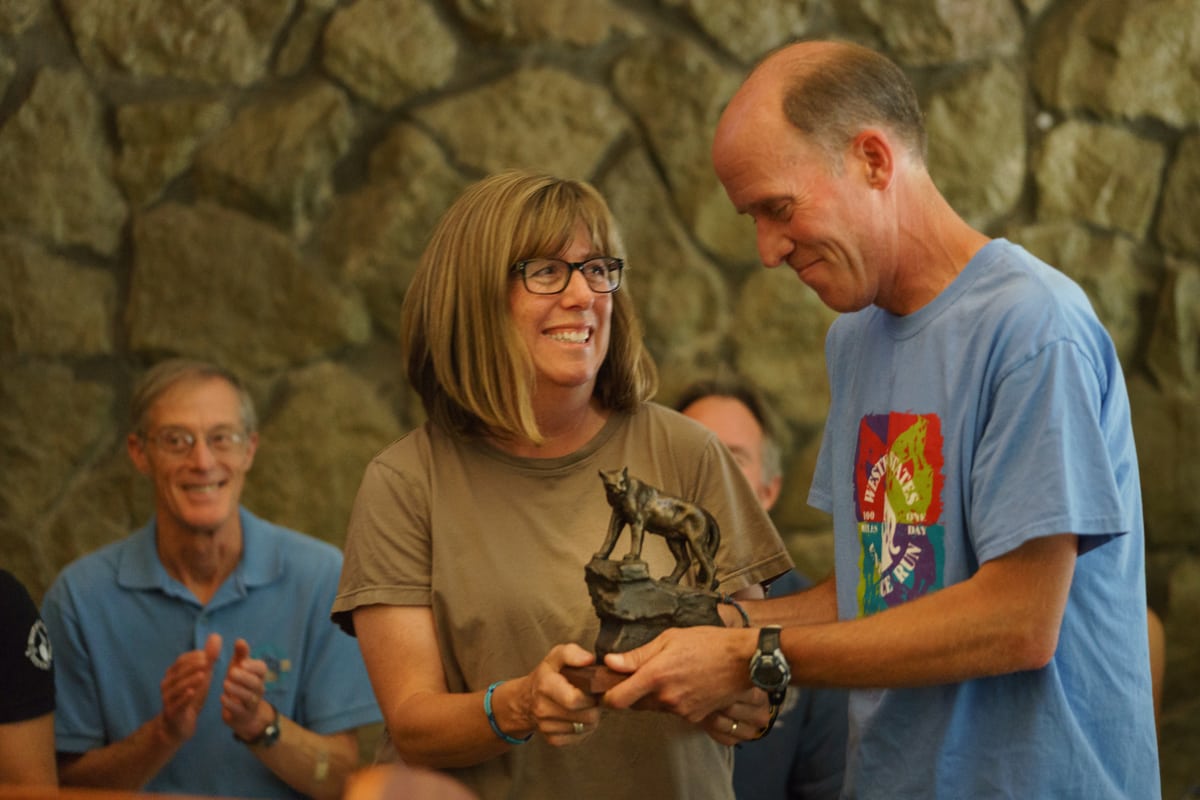
Jill with John as he receives the Western States Little Cougar Award, an award given to those who contribute extraordinarily to the Western States organization. Photo: Gary Wang
“Tropical John Medinger and Karl Hoagland [of UltraRunning Magazine] asked me to write the big bonus piece on Western States,” he said. “Since 2008, I have really enjoyed having all my reporting going to writing that big 3,000-to-3,500-word magazine-style look at that year’s Western States.”
These pieces require the short, post-race comments from the tired, exhilarated runner, and then several days after, a longer conversation where the two talk race-day strategy, food consumed, highs and lows, and what it took them to get over that line.
Lately, John is one of about 70 different media swarming the course, tracking each runner’s steps. Being a veteran of not only the race, but how to perfectly cover it, John’s experience comes in handy each year when it’s time to organize press passes and overall media presence. As the Western States Board of Trustees member with the most experience with the press, most of his duties revolve around managing race-day media.
John began his current position on the board in 2016, after serving as the Western States Board President from 2010 to 2015. Among those years as President, John was also racing on the trail, which turned out to be a bit too much to wrap one’s mind around, he said.
One day in 2004, John received a call from Western States’s Greg Soderlund and Tim Twietmeyer about helping them manage the race’s public relations–or a lack thereof at that point, still, he said.
John, who immediately thought the call a prank, said, “I had to think about it for a second. I thought about how much I loved the race and how it is such an integral part of my life and my family’s life that it wasn’t a long inner conversation I had with myself. I was more than happy to help.”
He has helped with advertisements, press releases, and big announcements, most recently with the drug testing during last year’s race.
“Being part of the public-relations game, I understand that you want to talk about the cascade of information, sequencing, and releasing information on the various platforms that we have whether that is Facebook, Twitter, or with good old-fashioned press releases and phone calls.”
He also is the go-to person for press passes, putting everyone through the same ringer–filling out a form to help him understand what the media needs and how each team should cover the race based on the board’s own requests.
What fascinates him each year is the magnitude of press and the difference between now and then, when he first started reporting on the legendary race.
In 1997, it was him, a man from the Auburn Journal, and a guy from The Mercury News in San Jose who made the big mistake of hiking down to the river, three miles down, not knowing what he was getting his non-athletic body into. He had to be driven out later, John said chuckling.
“So there were just three to four of us in 1997 and when I think today, gosh, we issue about 70 to 80 credentials to cover Western States. The level of sophistication these reporters have is so impressive. Especially what iRunFar’s Meghan Hicks and Bryon Powell do is just incredible. They are out there on the course, in real time, reporting the race and giving updates. We, the race organizers, sometimes get our updates from the iRunFar Twitter feed!”
With cameras flying and reporters adhering to their race-coverage strategy, John said it is a true pleasure to watch and work with a group of people who understand the sport.
It is folks like Meghan and Bryon and many other dedicated journalists who will be known in the history of ultrarunning for disrupting and changing our way of thinking about coverage and content in terms of sports, John believes.
Just interviewing athletes now has changed, he added. These runners are no longer those miners emerging into the sun, but are very aware of who they are and what their place is on the landscape, John explained.
“Athletes are more comfortable in their own skin. Compared to other sports, we may be a fringe sport, but the people who are a part of it don’t feel or think it’s fringy at all because of the welcoming, non-judgmental community,” he said.
But it is not just the athletes who have changed, it is everyone who looks at Western States as their own. Everyone has grown together to face challenges that still await. For example, the Board of Trustees challenges those who continue to demand a new lottery system for the popular race, “Double the size of the race to 700, that will make so many more people happy.” Well, yes, John said, that could work but how happy will people be when they are stuck in a conga line, unable to experience the trail, too busy looking at another’s feet?
“So these are the things the community as a whole talk and listen to each other about, and you see that when you’re reporting on the athletes and races themselves.”
Western States represents both sides, being able to forward-think into the future, but also being firmly rooted to its past.
The history of Western States is its biggest selling point, and being a history buff himself, John’s favorite aspect of the race. The trail is special, wherever you may be at the time.
John describes, “I understand the magic it holds for people. It is incredibly gorgeous and I feel like it’s alive. I always feel like there are footsteps that came before me, whether it was the pioneers who came during the Gold Rush or the ultra pioneers. Seeing all the amazing people and feeling their presence; that is the part that does it for me. Feeling all these people who just love this thing to death.”
When John was in the midst of his 10 Western States finishes, in addition to racing American River 50 Mile, Silver State 50/50–the Reno Silver State Striders race in which John has been the race director for the past six years–Way Too Cool 50k, Miwok 100k, and many others, he spent many weekends driving the two-hour drive to the Western States canyons to train.
“The canyons are hands down my favorite part of the race,” he said. “As Tim Twietmeyer will always tell you when he was running Western States and winning the race or finishing in the top three consistently, nobody would ever pass him on Cal Street. That was when he pushed it into overdrive and no one could touch him. My section would be the canyons.”
John is proud to point out that in 1997 and from 2000 to 2006, no one ever passed him up the climb of Devil’s Thumb.
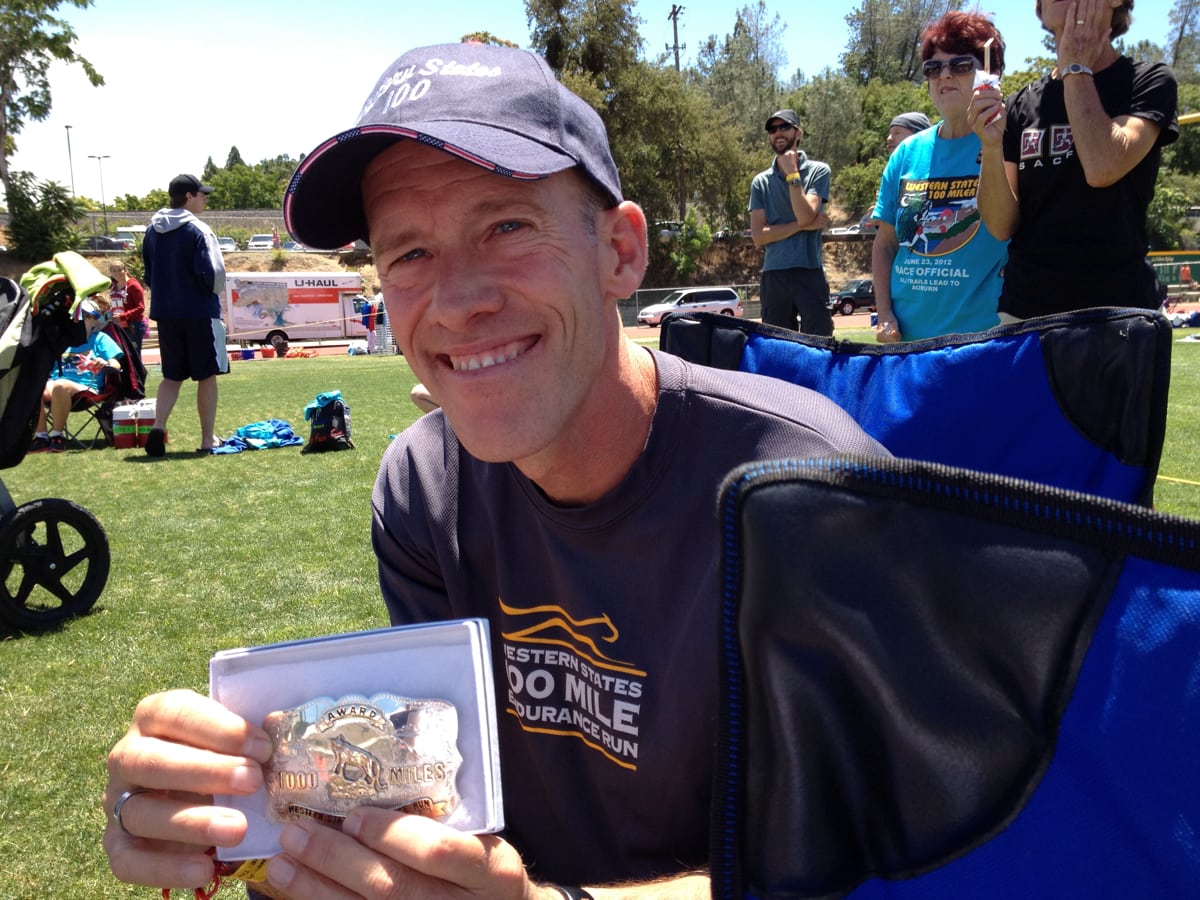
John with his Western States 1,000 Mile Buckle, which he earned in 2012 when he finished his 10th Western States. Photo: Jill Trent
He also trained in the canyons often, when finishing out 80-to-100-mile training weeks while imagining that what he was doing would push him ahead of a future competitor’s training.
During his 10th and final Western States in 2012, he and his daughter, who was pacing, were coming to the river crossing, both feeling great at the sub-24 hour pace.
“As we approached the river, we stopped on the trail, the sun was was setting and he said that he couldn’t believe that we were so close to the river and the sun hadn’t set yet,” Annie said. “He began to tear up, after having an amazing race. I was so proud of him for heading toward 10 finishes and being able to help him just a little bit for such an important race. It is one of my favorite memories of running with my dad.”
Since then, John has continued to cover the race and volunteer at the Foresthill aid station as aid-station captain. For the last 20 years, this has been the Reno Silver State Striders’s aid station, and it has also been one of the most ideal places for the journalist to capture the race’s events.
Around 1 to 2 p.m, the leaders stride through, and John watches the faces and body language to forecast the future of the race. He files away the looks of pain and trouble on some runner’s faces, and takes note of the determination on others, saving these details for later when he sits down with them as they retell the story.
John’s eyes and ears are always on alert, listening to others’ snippets of the race.
“Just walking around you hear conversations like, ‘Yeah, we were working at the aid station last night and boy, you should have seen Cat Bradley! When she came through, she didn’t even stop!’” he recalled. “So, when I interviewed Cat about her race I said, ‘So, I heard you literally didn’t stop at the aid station,’ and the first thing she said was, ‘How did you know that?’”
He was able to get the detail that Cat was exerting herself so much that she was afraid she would pass out if she stopped, so she kept running.
“As a reporter, when somebody tells you that, you file that away and write that down to weave it together into some sort of coherent narrative later,” he said.
Those little details of the human body and mind are what captures John every time and what influenced him to become a writer in the first place. His attention to these details and passion for what he is writing is also why friend Scotty Mills calls him one of the “best writers he has ever read.”
Scotty and John have one of those unbelievably interesting and ironic stories that has generated a brotherhood-like relationship between the two. During a Western States race about 10 years ago, Scotty said he came upon John running at about the same pace he was near the 30-mile mark.
“As it often happens during ultras, you come up on a person and you start sharing the trails and experiences and you get to know another person over the hours because you’re running together,” he said. “We ended up running almost 40 miles together.” The start of a friendship was initiated and a year later when Scotty was running Western States again, he looked up to see John on the trail as well.
“I say, ‘John! I can’t believe this! We are meeting up with each other at the same place!’” he recalled yelling out. “And I’m not kidding, it was about the same mile as last time and we shared about 40 to 50 miles together. That solidified the friendship and from that time on we kept in contact.”
Through leadership, balance, and prioritization, Scotty says one of John’s strongest talents is motivating and educating others through his writing. As Scotty watches John run, race direct, and take care of his family, he also sees those attributes portrayed in his writing.
“His ability to lead others and motivate by example is pretty impressive,” Scotty said. “It allows people to realize which things are really important in the way we lead our lives. His ability to reach people through the written word is an incredible gift and he is truly one of the best writers I’ve ever known.”
John claims it is interest in people’s lives that make every effort and experience truly worth it.
Even when John had to drop out of the Wasatch Front 100 Mile recently, the entire race was worth it thanks to the aid-station crew and captain Mark Robbins.
For a few years now, John has developed a sort of left-sided lean during the last half of 100 milers, and after a surgery on his knee in 2007, some races and runs just don’t go as planned. At mile 85 of Wasatch, John was forced to drop, and walking into the aid station, barely standing upright, the aid-station family gave him a chair and some food right away.
“They were phenomenal. They asked me who I was and what my story was and I asked them who they were and what their story was,” he said. “I remember thinking to myself in the chair at mile 85, how grateful I was to be in the midst of people who cared about me and knew I cared about them too. It was emotional. Even though I didn’t finish the race, it was where I needed to be that made the entire experience worth it.”
Wasatch now holds a special place in his heart, and will be a goal of his to finish in the future. Right now, because of the knee surgery, John has compromised with his body to continue with 100-mile races. He runs three times a week, which has worked well for him for the past several years. In between runs, he cross trains, and stretches and rolls out the kinks, little things now that he wished he would have done years ago. This year, he is planning on running the San Diego 100 Mile and has his name in the Wasatch lottery again, along with his two daughters. Usually, when one Trent family member races, the other three are pacers and crew members. However, if all three are chosen for Wasatch, John admits to not knowing what they are going to do.
“It has gotten more complicated each year,” he said. “We have to figure out way ahead of time what our race schedule will be, who’s running what, who can help where… I don’t know what we are going to do if all three get in. Jill may ask to be a part of a different family at that point!”
When one signs up for a race, it is another chance to spend time together, whether it is during the road trip blasting the favorite family song, “Stand Back” by Stevie Nicks, or the hours on the trail, and reminiscing about the ups and downs after.
No matter what the schedule brings each year, the race that brings them all together is of course, Western States. The day is more special and brings more excitement than Christmas, Katie Trent exclaims. When she was young, the race held the special privileges of staying up all night, running around in the woods, and just hanging out with family and friends.
“Now, Western States isn’t only one weekend in June,” she said. “Throughout the year, we make monthly excursions to go and run on the Western States Trail.”
Even training runs are a family-and-friends experience, often running with the Reno Silver State Striders.
“Saturday long runs are usually when my dad, sister, and I spend time together now,” Annie explained. “We all encourage each other to do our best and it’s also pretty goofy. We sing, talk, and laugh a lot.”
Beginning in 1997, the Trent girls have been with John at Western States, and they’ve been there every year since. They have watched him fly by with ease, struggle and endure, and cross the finish line 10 times. And, from pushing the girls in a stroller during Reno’s local Journal Jog, to watching Katie run Western States in 2015 and Annie in 2016, John has been center ring in watching his daughters grow into kind human beings and strong runners. Add in his wife Jill, who finished her first 100 miler at the Zion 100 Mile a few years ago, the Trent family is an unstoppable ultrarunning force.
“Watching Katie and Annie at Western States and Jill finish, those are the three–well, other than watching Annie and Katie being born and meeting Jill–those are the three most important moments of my life,” John said.
“I always joke that I was brainwashed to become an ultrarunner, because as long as I can remember my dad was running ultras and I thought it was normal and everyone ran 100-mile races,” Katie said. “I love that my parents introduced ultrarunning into my life. Going outside and running on the trails with my family has been one of my favorite pastimes for many years now and I wouldn’t want it any other way.”
Every once in awhile, John stops to remember why Western States has meant so much to him. It was 23 years ago this summer when he asked his future wife to follow him around a 100-mile race course. It is home to the same canyons he trained on that his daughters now enjoy. It is the place he kindled good, lasting friendships and stories to retell year after year.
It is all the little things that come together to create this bond between human and land. John thanks the race for his love of ultrarunning, his ability to meet and talk to amazing people every year, to work with the “incredibly intelligent, creative, and engaging” members of the Board of Trustees, and a bond he can share with his wife and daughters.
“I don’t know what my life would be without it,” John said simply. “I really don’t.”
Call for Comments (from Meghan)
- Do you know John Trent? Have you run or raced with him? If so, can you share a story of sharing the trails with him?
- Have you read John Trent’s writing? What do you remember about it?
[Editor’s Note: In 2014, we published “We Dream the Same Dreams: Rehabbing the Western States Trail After the American Fire,” written by John Trent. It not only tells a fascinating story, but it shows John’s writing style.]
